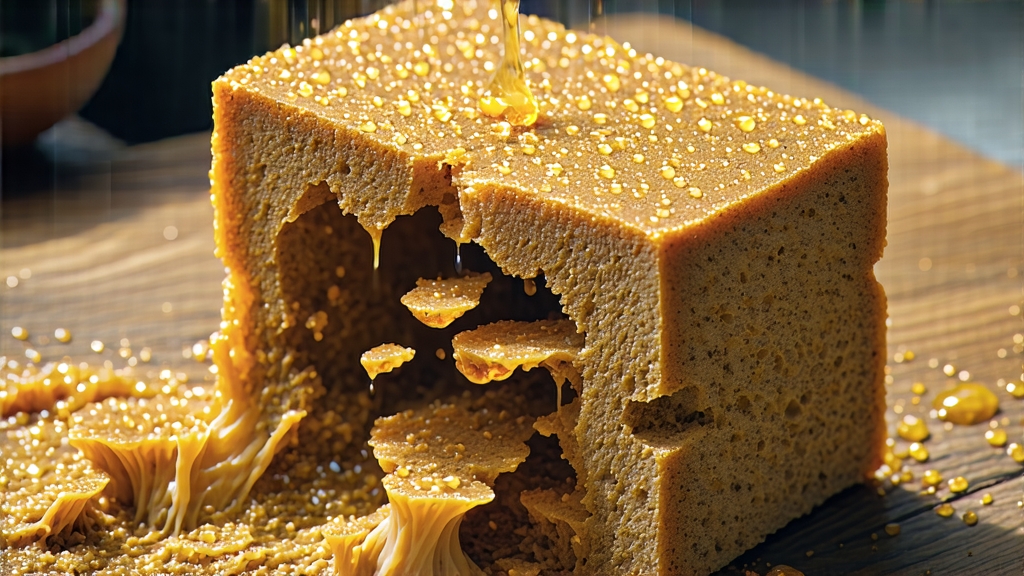
If you walk into the old tea markets of Xi’an or the caravan depots that once lined the Hexi Corridor, you will still hear the same phrase traders chanted eight centuries ago: “One brick for one horse, one brick for one sheep.” The brick in question is Fu zhuan—literally “Fu brick”—a dark, rock-hard slab of fermented tea that looks more like building material than beverage. Yet inside its compressed leaves hides a living ecosystem of golden-yellow fungi that perfume the air with chestnut, wet bark, and dried apricot. To understand why this humble brick once functioned as currency along the Silk Road, we must follow its journey from the misty Qinling Mountains to the camel caravans of Central Asia, and finally to the modern tea table where it is now prized for both flavor and health.
Historical footprints
The story begins in 1368, the first year of the Ming Dynasty, when the imperial court decreed that all tea bound for the northwestern frontier must be pressed into bricks to ease transport and standardize taxation. The small town of Jingyang, Shaanxi, strategically located between the tea-producing south and the horse-breeding steppe, became the imperial depot. Caravans carrying silk and porcelain outbound loaded up with these bricks for the return trip, exchanging them along the way for horses, wool, and medicinal herbs. By the Qing era, annual production surpassed five thousand tons, and Fu brick had become the daily drink of Mongol khans, Tibetan lamas, and Kazakh herdsmen who believed it dissolved mutton fat, eased altitude sickness, and “cleaned the five inner organs.”
Microbial terroir: the birth of “golden flowers”
Unlike other dark teas that rely purely on enzymatic oxidation, Fu brick undergoes a second, microbial fermentation inside the brick itself. After the leaves are fixed, rolled, and sun-dried as rough green maocha, they are steamed and pressed into brick molds lined with breathable cotton paper. The bricks are then slid into a basement “flower room” where temperature is held at 28 °C and relative humidity at 75 %. Within 48 hours, spores of Eurotium cristatum—an acid-tolerant mold—begin to bloom, forming tiny yellow specks the locals poetically call “golden flowers.” Over the next twelve days the mold threads its way through the leaf layers, secreting enzymes that convert polyphenols into theabrownins and split large polysaccharides into sweet, digestible fragments. The result is a dramatic drop in astringency and the emergence of a mellow, honey-like thickness unique to Fu brick.
Craftsmanship in five acts
- Picking: only one bud with three or four leaves plucked after Grain Rain, when the leaf’s fiber is sturdy enough to withstand months of compression.
- Pan-firing: a brief 280 °C sear in iron woks that kills green enzymes yet keeps interior moisture above 60 %, the starter culture for later fermentation.
- Rolling & sun-drying: the leaves are twisted into strips and spread on bamboo mats under high-altitude UV that adds a subtle alpine note.
- Piling: seven-day wet piling at 50 cm depth, turning every 24 h to reach 55 °C, the first microbial hurdle that softens grassiness.
- Brick-making & flowering: 1.2 kg of leaf is steamed, tipped into a cedar mold, pressed at 50 bar, and wheeled into the flower room. After the golden bloom, bricks are slowly dried for 30 days until moisture falls to 12 %, locking the living culture in suspended animation.
Aging: the 30-year curve
While many teas fade after two years, Fu brick enters its golden decade between the 8th and 20th birthdays. During this span, Eurotium continues a quiet respiration, consuming residual sugars and oxygen trapped in capillaries, converting them into γ-aminobutyric acid (GABA) and the polyol mannitol that lends a cooling, mint-like finish. A 1998 brick recently opened in Hong Kong tasted of dried longan, camphor, and a faint hint of leather—notes absent in its younger self. Connoisseurs store bricks unwrapped in red clay jars, allowing seasonal humidity swings to “teach” the tea, much like a cognac breathes through oak.
Grades and regional styles
Traditional Fu brick comes in three official grades judged by flower density:
- Special Flower (≥ 900 colonies per